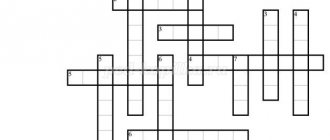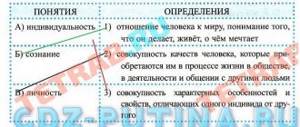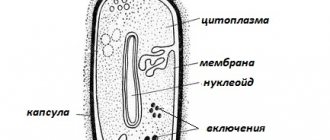Social Studies Test Crimes and Legal Responsibility Grade 9
Social studies test Crimes and legal responsibility for 9th grade students with answers. The test consists of 3 parts. In part 1 there are 15 tasks, in part 2 - 4 tasks, in part 3 - 1 task (essay).
Part 1 - multiple-choice assignments Part 2 - short-answer assignments Part 3 - extended-answer assignment (essay on one of the suggested topics)
Part 1
1. The offense cannot be in the form
1) deeds 2) thoughts 3) actions 4) inaction
2. Criminal liability as a general rule comes with
1) 15 years old 2) 16 years old 3) 18 years old 4) 20 years old
3. From the age of 14, criminal liability begins for
1) insult 2) illegal hunting 3) knowingly false report of an act of terrorism 4) concealment of information about circumstances that pose a danger to the life and health of people
4. An administrative offense is
1) crossing the road at a red (prohibiting) traffic light 2) being late for work 3) causing damage to the car (for example, damage to the front window) 4) refusal of a crime witness to testify to the investigator
5. Legal liability is a type of liability
1) moral 2) religious 3) social 4) disciplinary
6. There should be liability for being late for work.
1) criminal 2) civil 3) administrative 4) disciplinary
7. Traveling without a ticket on public transport entails liability.
1) criminal 2) civil 3) administrative 4) disciplinary
8. Responsibility for drinking alcoholic beverages under minors
1) criminal 2) civil 3) administrative 4) disciplinary
9. Absenteeism entails responsibility
1) criminal 2) civil 3) administrative 4) disciplinary
10. Disciplinary liability is regulated
1) Code of Administrative Offenses of the Russian Federation 2) Labor Code of the Russian Federation 3) Criminal Code of the Russian Federation 4) Civil Code of the Russian Federation
11. A type of legal liability that involves compensation for damage caused to property is liability
1) criminal 2) disciplinary 3) administrative 4) civil
12. The objective side of the offense includes
1) method of committing the act 2) legal responsibility 3) motive 4) guilt
13. The subjective side of the offense includes
1) guilt 2) wrongfulness of the act 3) harm caused by the act 4) inaction
14. Battery is a type of crime against
1) personality 2) state power 3) public safety and public order 4) honor and dignity
15. Libel is a type of crime against
1) personality 2) state power 3) public safety and public order 4) state power
Part 2
1. Below is a list of terms. All of them, with the exception of one, relate to the concept of “subjective side of the offense.” Guilt, act, motive, purpose, intent, negligence. Find and write down a term that refers to another concept.
2. Select from the list the elements related to the objective side of the offense and write down the numbers under which they are indicated in the answer line.
1) guilt 2) time 3) method of committing the offense 4) purpose 5) harm caused by the offense 6) cause-and-effect relationship between the act and the harm that occurred 7) motive
3. Establish a correspondence between the form of guilt and its definition: for each position in the first column, select the corresponding position from the second column.
Form of guilt
A) direct intent B) indirect intent C) gross negligence D) simple negligence (criminal negligence)
Definition
1) the person did not realize the illegality and social danger of his act, did not foresee harmful consequences, but should and could have foreseen these consequences 2) the person was aware of the illegality of his act, foresaw the possibility or inevitability of harmful consequences, but did not want them to occur and without sufficient measures there is reason to arrogantly count on preventing these consequences 3) the person was aware of the wrongfulness of his act, foresaw the possibility or inevitability of harmful consequences, but did not want to, although he allowed these consequences or was indifferent to them 4) the person was aware of the wrongfulness of his act, foresaw the possibility or inevitability the occurrence of harmful consequences and desired their occurrence
4. Select administrative offenses from the list below.
1) violation of fire safety requirements 2) ticketless travel on public transport 3) slander 4) appearing in public places while intoxicated 5) violation of contract terms
Part 3 (essay topics)
1. “Soft laws are rarely obeyed, harsh laws are rarely enforced” (B. Franklin).
2. “True responsibility can only be personal. A man blushes alone” (F. Iskander).
3. “It is impossible to take a single step on this earth without coming into contact with responsibility and duty that must be fulfilled...” (T. Carlyle).
4. “Only the punishment that he deserves disgraces a person” (Plautus).
5. “Commensurate punishments with offenses, otherwise they will be revenge” (P. Buast).
Answers to the social studies test Crimes and legal responsibility Part 1 1-2, 2-2, 3-3, 4-1, 5-3, 6-4, 7-3, 8-3, 9-4, 10-2 , 11-4, 12-1, 13-1, 14-1, 15-1 Part 2 1. act 2. 2356 3. 4321 4. 124
PDF version Test Offenses and legal liability (93 Kb, pdf)
Social Studies Test Crime Grade 9
Social studies test Crime grade 9 with answers. The test consists of two parts. Part A - 6 tasks, part B - 4 tasks.
A1. It is a civil offense
1) obscene language used by teenagers in a city park 2) possession and distribution of drugs 3) driver exceeding the speed limit on the highway 4) destruction of a section of fence due to the actions of a neighbor in the country
A2. Are the following judgments about guilt correct?
A. A person’s guilt can be expressed in the form of direct or indirect intent. B. A person’s guilt cannot be expressed in the form of negligence.
1) only A is true 2) only B is true 3) both judgments are correct 4) both judgments are incorrect
A3. Compulsory educational measures applied to minors do not include themselves
1) warning 2) compulsory work 3) restriction of leisure 4) transfer to parental supervision
A4. A third-year student at the institute did not show up for the test without a good reason. That's an example
1) administrative offense 2) criminal offense 3) civil offense 4) disciplinary offense
A5. Are the following statements about the legal responsibility of minors correct?
A. According to the law, not all types of punishments can be applied to minors. B. The criminal liability of a teenager, by a court decision, can be replaced by compulsory educational measures.
1) only A is true 2) only B is true 3) both judgments are correct 4) both judgments are incorrect
A6. The management did not place fire extinguishers and evacuation plans in case of fire on the company premises. Thus, fire safety rules were violated. This is an example of an offense
1) civil 2) administrative 3) disciplinary 4) criminal
IN 1. Find the similarities and differences between a misdemeanor and a crime.
1) is an illegal act 2) leads to legal liability 3) is specified in the Criminal Code of the Russian Federation 4) poses a particular danger to society 5) can be committed through negligence
Select and write down the serial numbers of the similarity traits in the first column of the table, and the serial numbers of the differences in the second column.
| Similarities | Features of difference |
AT 2. Find in the proposed list types of crimes for which legal liability begins at the age of 14.
1) bribe 2) murder 3) false report of a terrorist attack 4) theft 5) fraud
Write down the numbers under which these types of crimes are indicated in ascending order.
AT 3. Match the participants in the crime and their roles: for each position given in the first column, select the corresponding position from the second column.
PARTICIPANTS IN THE CRIME
A) Organizer B) Instigator C) Performer D) Accomplice
ROLES
1) Gives advice on committing a crime 2) Develops a general idea and plan for a crime 3) Commits criminal acts 4) Induces to commit criminal acts
Write down the selected numbers under the corresponding letters.
AT 4. All of the terms listed below, with the exception of one, are signs of a crime.
Guilt, wrongfulness, thought, act, punishability.
Find and indicate a term that falls out of this series.
Answers to the social studies test Crime grade 9 A1-4 A2-1 A3-2 A4-4 A5-3 A6-2 B1. 125 34 B2. 234 B3. A2 B4 C3 D1 C4. Thought
PDF version Test Crime Grade 9 (109 Kb)
Test with answers Offenses and legal liability (Unlawful ...)
Category: Law
An unlawful act of a subject, resulting in harm to society, the state or individuals and entailing legal liability: a) act b) offense + c) crime d) guilt
2. What is the opposite of an offense: a) lawful behavior + b) exemplary behavior c) good behavior d) decent behavior
3. What is not a mandatory sign of an offense: a) causing harm b) presence of guilt c) feeling of guilt + d) illegality
4. What is not a type of offense: a) misdemeanor b) act + c) crime d) all of the above
5. According to the legislation of the Russian Federation, the following may be held criminally liable for theft: a) from 14 years of age + b) from 15 years of age c) from 16 years of age d) from 18 years of age
6. For a misdemeanor you cannot receive: a) a fine b) correctional labor c) imprisonment + d) compensation for property damage caused
7. Disciplinary and financial liability are regulated by: a) the Civil Code of the Russian Federation b) the Criminal Code of the Russian Federation c) the Labor Code of the Russian Federation + d) the Constitution of the Russian Federation
8. Translated from Latin, the word “presumption” means: a) right b) obligation c) assumption + d) evidence
9. An act is: a) action b) inaction c) all of the above +
10. Which of the following applies to administrative offenses: a) crossing the road at a red (prohibiting) traffic light + b) being late for work c) causing damage to a car (for example, damage to the front window) d) refusal of a crime witness to testify to the investigator
11. At what age does criminal liability for all offenses begin: a) from 15 years old b) from 16 years old + c) from 18 years old d) from 20 years old
12. In what form cannot an offense be committed: a) deeds b) thoughts + c) actions d) inaction
13. What is the element of the subjective side of the offense: a) guilt + b) illegality of the act c) harm caused by the act d) inaction
14. What liability does absenteeism and being late for work entail: a) criminal b) civil c) administrative d) disciplinary +
15. Criminal liability at the age of 14 occurs for: a) insult b) illegal hunting c) knowingly false report of an act of terrorism + d) concealment of information about circumstances that pose a danger to the life and health of people
16. What is the element of the objective side of the offense: a) method of committing the act + b) legal responsibility c) motive d) guilt
17. Civil liability is not characterized by: a) compensatory nature b) dismissal from work + c) property relations d) full compensation for harm
18. What is the name of the mental state of a person in which he is not able to realize the actual nature and social danger of his actions: a) presumption of innocence b) legal insanity + c) offense d) legal capacity
19. What is the name of the offense, the commission of which entails the application of criminal liability measures to a person: a) offense b) misdemeanor c) crime + d) act
20. The use of state coercive measures is typical for: a) religious responsibility b) legal responsibility + c) moral responsibility d) social responsibility
21. Which of the following does not apply to crimes: a) false report of an act of terrorism b) late payment of rent + c) extortion of narcotic drugs d) theft of a car
22. Which of the following terms relate to the concept of “offence”: a) legal custom, precedent, normative agreement b) systematicity, repeated use c) act, illegality, guilt + d) legal capacity, legal capacity
23. Deviant behavior always: a) causes harm to society b) causes harm to the individual c) violates the rule of law d) does not correspond to social norms +
24. Who is not subject to criminal liability: a) legal entities + b) officials c) citizens who have reached 16 years of age d) citizens who have reached 18 years of age
25. What is the difference between legal norms and moral norms: a) legal norms regulate people’s behavior b) a violator of legal norms experiences universal condemnation c) legal norms arose along with human society d) legal norms are ensured by the state through the apparatus of coercion +
26. What type of legal liability does not exist: a) commercial + b) disciplinary c) administrative d) criminal
27. Criminal liability is regulated by: a) the Civil Code of the Russian Federation b) the Criminal Code of the Russian Federation + c) the Labor Code of the Russian Federation d) the Constitution of the Russian Federation
28. For drinking alcoholic beverages, a person under 18 years of age bears: a) administrative liability + b) criminal liability c) disciplinary liability d) moral liability
29. Legal responsibility is one of the types: a) social responsibility + b) criminal responsibility c) disciplinary responsibility d) moral responsibility
30. What is the purpose of legal responsibility: a) to punish the offender b) to prevent the commission of illegal acts in the future c) to protect law and order d) all of the above +
Tests on the topic: Offenses and legal liability.
A citizen crossed the street at a prohibiting traffic light. Determine the type of legal liability.
Links are not resources: 1. Castle Quiz clevver.me/ 2. Dunno.about neznaika.pro/ 3. My achievements...
If you discover that materials are being used illegally on our website, please notify the administrator and the materials will be removed. Editorial opinion may be different from those of the authors. Founder - Kovalev Denis Sergeevich, Editor-in-Chief - Kovalev D.S.
The insured car of citizen Ivanov crashed into a tree because the driver tried to avoid a collision with the car of citizen Petrova.
Below is a list of terms. All of them, with the exception of one, relate to the concept of “subjective side of the offense.”
By clicking the button below you can download the Test on the topic: “Legal Responsibility” in the Social Studies category, Grade 9, for free. We will be grateful if you leave a review or look at other materials on our website.
Find a concept that is generalizing for all other concepts in the series below, and write down the number under which it is indicated.
Establish a correspondence between examples of offenses and branches of law: for each element given in the first column, select the corresponding element from the second column. Write down the selected numbers in the table under the corresponding letters.





